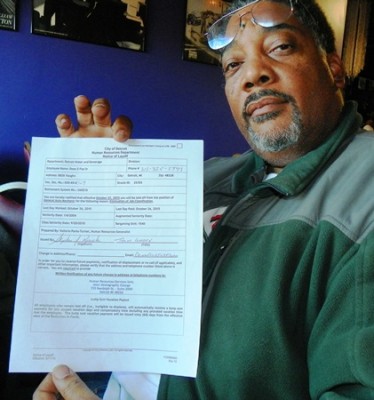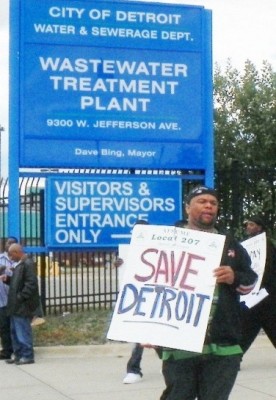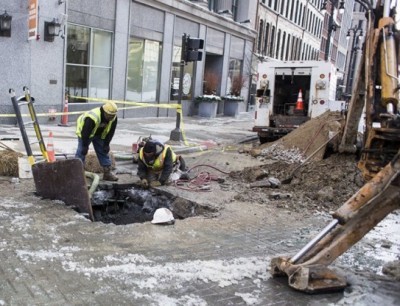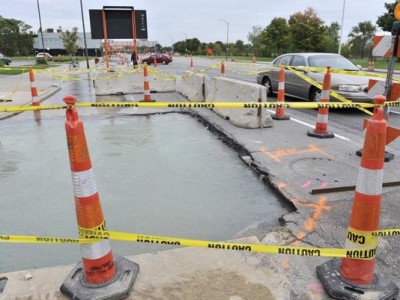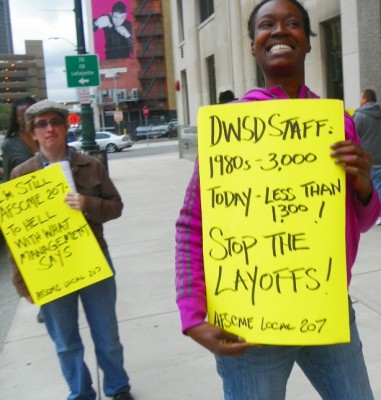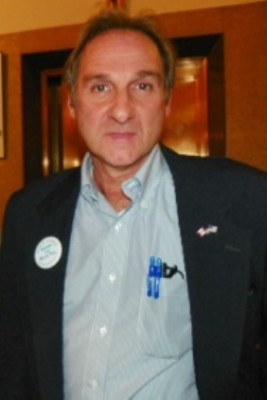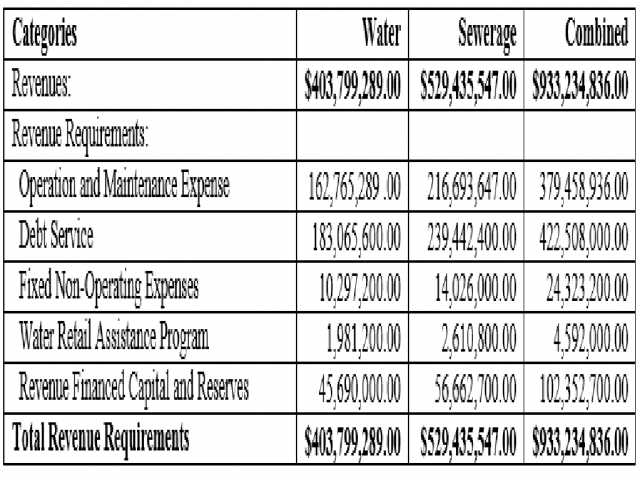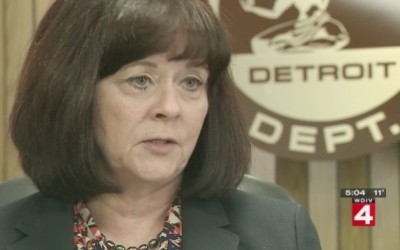
Laidoff DWSD workers ( front l to r) Sammy Barber, Edward Collins, Dean E. Fox, Sr. (Back: VOD reporter Cornell Squires)
“If people think things are bad in Flint, wait until they see what’s going to happen to THEIR water.”
Detroit Wastewater Treatment Plant severely understaffed; “when you call there, nobody answers.”
GLWA takeover in trouble: GLWA/DWSD to work as independent partners from Jan. 1 2016 to June 30, 2016
Meanwhile, BOWC approves bonds for new debt, which will cause more rate increases for water of dangerous quality
#GLWA, #DWSD, #Layoffs, #Bonddebt, #Watershutoffs, #WaterisLife, #StandUpNow, @WeThePeopleDet, #OurWaterOurVote, @Detroit2700plus, @DETWaterBrigade, #DetroitWater, #Right2Water, #Detroit2Flint, @MCHumanRights, @PeoplesWaterDet, @ACLUofMichigan, #noconsent, #freetheirish5, #neweradetroit, #stopthewatershutoffs, #nowaynopay, #Beatbackthebullies
By Diane Bukowski and Cornell Squires
Nov. 3, 2015
DETROIT – The Detroit Water & Sewerage Department (DWSD) has laid off at least 200 workers in recent months, many of them long-term, experienced employees, according to documents received by VOD and information from workers themselves.
DWSD is using secrecy, deception, and privatization to carry out the lay-offs. It has even had security escort some the employees off the premises, with no advance notice of their separation. Layoffs are being carried out without regard to seniority, according to the workers and their union representatives.
“If people think things are bad in Flint, wait until they see what going to happen to THEIR water,” laid-off workers Edward Collins, Jr., Dean E. Fox Sr., and Sammy Barber told VOD reporters at Bert’s Place Nov. 1. They showed lay-off notices with “elimination of job title,” not “lack of work,” listed as the reason for termination, or no reason at all. The three were general auto mechanics.
VOD also interviewed an active worker at Detroit’s Wastewater Treatment Plant (WWTP), but is not using his name to avoid retaliation. The workers above said staffing there is so bad that “when you call there, nobody answers.”
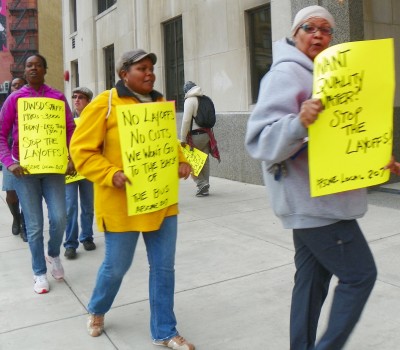
Members of AFSCME Local 207 protest lay-offs, takeover of DWSD in front of Water Board Bldg. Oct. 13, 2015
“They’re trying to run a municipality like a business,” Fox said. “But a city is not for profit, it’s for service. How can the federal government sit back and watch this go on? This is serious. Residents’ lives are being put in danger.”
DWSD Director Sue McCormick, now confirmed as director of the incoming regional Great Lakes Water Authority (GLWA), said in an earlier interview that she had eliminated 41 percent of DWSD workers prior to the new cutbacks. Notorious privateers EMA and Veolia are being paid as “consultants” to the DWSD. EMA earlier recommended the elimination of 81 percent of DWSD’s workforce.
Letter notifies AFSCME of lay-offs, not transmitted to workers
Sixty-one AFSCME Local 207 workers were laid-off Oct. 23, according to a DWSD letter to Catherine Phillips, Staff Representative for Michigan AFSCME Council 25 dated Sept. 29, 2015. They including the three VOD interviewed, who said they were not informed ahead of time by management or by Council 25 of the pending lay-offs.
Letters have also been sent to other unions, according to current DWSD Director Sue McCormick’s Oct. 28 report to the Board of Water Commissioners.
Phillips was one of three AFSCME representatives, including Ed McNeil, assistant to the director of AFSCME Council 25, and Staff Rep. Melvin Brabson, who went to the picket lines during a strike by WWTP workers in Sept. and Oct. 2012, to deliver letters from U.S. District Court Judge Sean Cox ordering them back to work. The strike had been set for Oct. 1, but WWTP workers walked out early after rumors spread that Cox would issue a pre-emptive order.
Workers on the picket lines carried signs saying “SAVE DETROIT,” and “The battle for Detroit begins here.”
“We want DWSD under the control of the city,” one worker said then. “We are fighting for Detroit and all of its people.
Terri Taber Conerway, DWSD Organizational Development Director, said in the letter to Phillips that the terminations resulted from the elimination of 11 long-existing classifications represented by AFSCME Local 207: Auto Repair Helper, General Auto Mechanic, Pitometer Technician, Sewage Plant Attendant, Sewage Plant Operator, Sr. Pitometer Technician, Storekeeper, Water Meter Worker, Water Plant Attendant, Water Plant Operator, and Water Systems Control Instruments Technician.
In the main garage, where all DWSD vehicles including excavators and dump trucks are repaired, Collins said, 11 out of 25 auto mechanics were laid off although they were already short 10 people.
Audrey Bellamy, president of the Senior Accountants, Analysts and Appraisers was quoted in a Detroit Free Press article telling the City Council Nov. 3 that workers are being laid off regardless of seniority and other contract provisions.
“They appear to have laid off most of our senior members,” Bellamy said. “You have a problem when you start picking and choosing and treating people unfairly.”
WWTP workers down 370
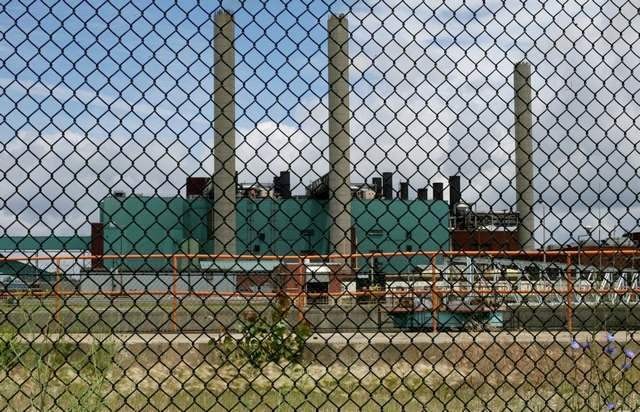
Detroit Wastewater Treatment Plant at 9300 W. Jefferson is the largest such facility in the U.S., and the third largest in the world.
An active WWTP worker told VOD over the phone that he is currently working multiple shifts back to back because so many people at the WWTP have been laid off or transferred. He said management has the authority to tell workers to stay on the job at the end of their shift if they are short-staffed. If they leave, they are fired.
Detroit’s Wastewater Treatment Plant is the largest in the country and the third largest in the world, after China and Brazil, he said. Its operations are crucial to keeping dangerous toxins and algae out of the Detroit River and Lake Erie, as well as preventing floods of freeways and basements like those that overtook metro Detroit in August, 2014. Then, WWTP retirees said three major sewage pumps at the WWTP were out of commission at the time because 24/7 maintenance oversight had been halted due to lack of staff.
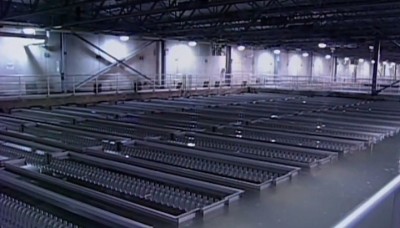
Inside DWSD WWTP; 24/7 surveillance of sewage pumps has been eliminated, causing constant breakdowns.
“There are sometimes only two workers on a floor, sometimes one, and sometimes none at all,” he said. “I can hardly leave the job because they’ve laid off about 70 people, or transferred them, or switched them around to other jobs. They were already short 300 workers. One worker recently had a major heart attack. The people running this place are totally incompetent. They’re dumping sewage sludge back in the river, and they just got fined for that. They’re piling up other sewage sludge outside the new [NEFCO] sludge-drying plant across from us, because they haven’t been able to get it working yet.”
McCormick confirmed in her report, “The WWTP received stipulated penalties . . . for failure to comply with requirements . . .Specifically, fecal coliform during a wet weather event was over the limit at a Combined Sewer Overflow (CSO) basin outfall and a prohibited bypass at Outfall 054 . . .The stipulated penalty for $5,000 for each occurrence for a total of $10,000.”

Aerial photo shows green areas of contamination at Metropolitan Beach, at the mouth of the Clinton River, on July 4, 2015.
Recently, DWSD told its customers that they should begin cleaning out their “storm basins,” evidently referring to sewers in front of their homes. They gave the same advice in August, 2014 after metro area freeways and basements were flooded with billions of gallons of water during heavy storms, largely due to three major non-functioning sewage pumps in the WWTP, according to WWTP retirees.
Evidently, the city is worried about more such situations.
Metropolitan Beach was shut down this past July due to contamination there. An aerial view by NASA showed green areas of algae contamination like that which caused the Toledo water crisis of Aug. 2014, also related to WWTP malfunctions.
On September 23, 2015, the Windsor-Essex County Health Unit issued a boil water advisory for Boblo Island, which is downriver from the WWTP. Dr. Gary Kirk, the medical officer of health, said only bottled water or water brought to a boil for one minute should be used for consumption, food and ice preparation.
DWSD Chemist says $700 million NEFCO plant will raise sewage rates, make profit only for NEFCO
At the GLWA’s Oct. 19 meeting, McCormick reported on delays in getting the New England Fertilizer Company (NEFCO) sludge-drying plant, being constructed across from the WWTP, up and running. It is the largest such facility in North America, and is slated to take sewage sludge from the WWTP and convert it into dry pellets to be used for agricultural fertilizer, and to produce energy for DTE.
Construction on the facility began in 2013, and was supposed to have been completed this fall, but McCormick has admitted to ongoing delays. The contract’s original cost as posted on the facility’s wall was $138,000,000; with change orders since then it has risen to $700 million, paid for out of income from sewerage charges.
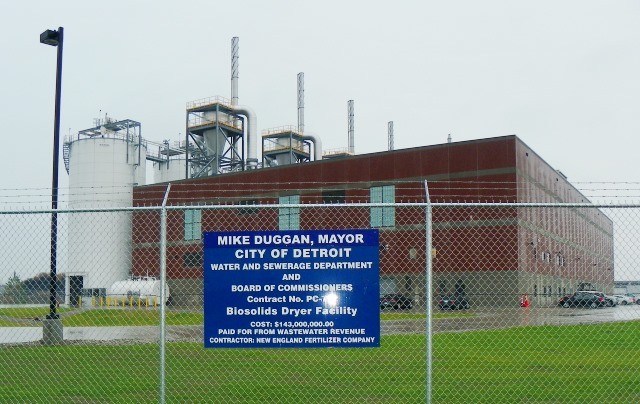
NEFCO Biosolids Dryer at 9129 W. Jefferson, Detroit on Nov. 10, 2015. Original cost of $138 M as posted has risen to $700 M with change orders as completion delayed.
DWSD chemist Saulius Simoliunas called the NEFCO facility, which will be staffed by NEFCO, not DWSD workers, a total folly.
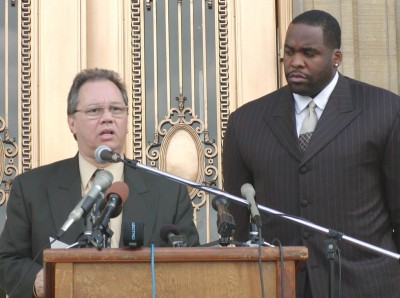
Former DWSD director Victor Mercado with former Mayor Kwame Kilpatrick, both indicted for RICO violations. Kilpatrick is serving 28 years in prison, Mercado likely told on him and is scott-free.
“The NEFCO sludge-drying facility, financed by DWSD with millions of bond money, is one of a kind and by one bidder,” Simoliunas said. “It is designed to raise the sewer rates since it will not earn a cent. Most communities get money for their sewage sludge . . . This is quite different from paying an outside firm to dry our sludge to take to a contractor’s landfill.”
Another report on the project exulted, “NEFCO will make amazing amounts of money via DWSD contracts for the drying/processing of sewage sludge for Detroit. Remember the Synagro contracts worth literally a Billion dollars?”
The NEFCO deal is the new Synagro. The Synagro contracts caused a major scandal and were linked to the indictment and jailing of then Mayor Kwame Kilpatrick and his associates.
Simoliunas added, “The laying-off of half the technical force from DWSD will put the system in permanent disability to do anything right,” he testified. “Ratepayers have to be prepared to pay the highest rates in the nation for inferior service.”
McCormick reported that 1120 workers have been placed in new classifications. Workers meeting with VOD said management told them they had to re-apply to get those jobs, without regard for seniority, even if the jobs involved work they had done for many years. They said if they didn’t reapply, they were summarily laid off. McCormick told the BOWC that 700 DWSD workers applied, but only 687 were accepted.
The new classifications often combine the job duties of several previous different titles, for which workers have not always been adequately trained. Workers said DWSD is tricking some workers into taking the new titles, then laying them off anyway. Once those lay-offs happen, the workers are caught in no-win situation. They cannot use their seniority to transfer to other city departments because the titles don’t exist elsewhere.
Safety, customer health issues
“This is a safety issue,” Fox said. “DWSD is getting federal money to provide clean water, but they are putting inexperienced people in positions doing dangerous stuff. When you first start, you learn a lot from the other guys, for instance how to find the actual hole that is the source of a water main break. It’s not always where the water is spouting off.
“Recently, one guy with the title of ‘truck driver’ was running an excavator, with no experience knowing how wide the circumference to swing the bucket was, and he tore off the whole side of a church.”
Barber said four-man crews are needed to work in manholes, but they are being reduced to three-man crews, a highly dangerous situation.
“You need a top man, an operator, and two men to go down into the hole, even 5-10 feet,” one said. “If there’s a problem in the hole, you need someone to go down there to help get the men out. One guy doing a water job on the side recently got caught in a cave-in and almost died.”
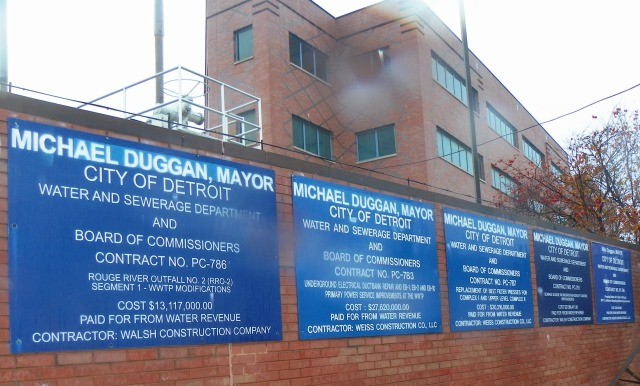
Contracts posted on WWTP walls Nov. 10, 2015 total $40,333.000, not including change orders, as WWTP staff is decimated.
Much of the water and sewage construction work is being contracted out at great expense to DWSD. Minutes for the meetings of the BOWC over the past year show huge contracts being let. Contracts underway for the WWTP as posted on its wall Nov. 10 total $43,300,000, while the majority of WWTP city workers have been eliminated.
They are let to Walsh Construction, which has merged with Archer Western to handle global projects, and Weiss Construction, both white-owned, non-Detroit based firms that have gotten the lions’ share of construction contracts from DWSD over past decades. Such contracts are the low-hanging fruit being sought by the architects of the Great Lakes Water Authority.
At least 40 clerical workers have recently been laid off as well, along with chemists and engineers. The engineers are being replaced with non-licensed workers, according to Association of Detroit Engineers Pres. Shakil Ahmed.
“DWSD is laying off 11 experienced engineers with professional licenses and in their place are bringing engineers with no experience and without professional licenses. We are very short in engineering staff and this action will upset the operation of DWSD,” Ahmed said in an email to GLWA Chair Robert Daddow. Daddow told Ahmed to direct his complaint to DWSD since the GLWA had not yet taken over.
James Casha, an individual contractor who worked for DWSD for many years as an engineer, took issue with GLWA’s Oct. 19 approval of Sue McCormick as CEO.
“The GLWA and DWSD need to be run by licensed civil engineers,” he said. “The GLWA should put her approval on hold until a full investigation is carried out into her role in the Flint water crisis.”
Although Michigan Gov. Rick Snyder and former Flint EM Darnell Earley ordered the separation of the Flint water system from DWSD, McCormick as CEO of DWSD should have warned of the dangers, he implied.
Flint’s Water Department reconnected with DWSD for nine months on Oct. 15, 2015, after a major expose of a rise in lead in children’s blood levels resulting from use of the Flint River instead of Lake Huron for the city’s water intake.
But Flint is expected to leave DWSD again to join the Karegnondi Water Authority, a Flint/ Genesee County partnership. The Authority is building a new pipeline to Lake Huron rather than continuing to purchase water from DWSD. Communities in the county will treat their own water instead of using Detroit’s ready-to-drink water, or use it raw for agriculture. It is questionable how those communities plan to construct their own treatment facilities, and with what expertise.
DWSD increases debt load while jettisoning workers, raising rates
While DWSD continues to dump its long-time, experienced and dedicated workers, it is busy incurring more debt on top of the $5.5 billion it currently owes, which includes an additional $300 million borrowed after the bankruptcy was confirmed by Judge Steven Rhodes in December. Orr, who claimed Detroit’s main problem was an alleged $18 billion in debt, had actually proposed during bankruptcy proceedings that DWSD bondholders take a $2 billion haircut, but Wall Street promptly quashed that idea.
Currently, according to a chart published at the Oct. 28 meeting, the Detroit Water and Sewerage divisions have a combined ANNUAL revenue requirement of $933,234,836. Of that, $422,508,000, or approximately 45 percent, is assigned to debt service. The City of Detroit contract with the GLWA specifies that rates are based on “revenue requirements.”

Baxter Jones (center) with other protesters June 6, 2013, as Detroit EM Kevyn Orr speaks inside church.
Despite DWSD’s already skyrocketing debt, the BOWC approved the sale of $125 million in new “Sewage Disposal System Revenue” bonds at its Oct. 28 meeting. The agenda for a DWSD Special Finance Committee meeting Nov. 2 includes recommendations for the sale of an additional unspecified amount of both Water Supply System and Sewage Disposal System Revenue Refunding Bonds.
McCormick said the bonds were sold through the Michigan Finance Authority, allowing for lower interest rates. She said that while rates will rise for DWSD and later GLWA customers, the lower interest rates will benefit them. DWSD water and sewerage rates have already risen 120 percent over the last ten years.
Increasing rates cause more water shut-offs
McCormick said in her Oct. 28 report that 16,078 residential accounts found to be on illegally have been permanently shut-off, meaning water service will never be restored to those addresses. That also means those homes will no longer be occupied and will add to the increasing amounts of vacant land in the city, as well as reducing property taxes.
She said that since May 11, DWSD has posted 49,824 door hangers notifying customers of pending shut-off of services. She said 27,172 of those customers have either paid their bills or entered into Payment Plan Agreements. She neglected to note the high rate of delinquency on such agreements, which are themselves unaffordable for most customers.
Below, Detroit COO Gary Brown, soon to take McCormick’s place as DWSD Executive Director, despite the fact that his career with the city was largely in the Police Department, rationalizes water shut-offs despite United Nations mandates barring them.
Video:
Related: The Coalition to Save the Detroit Water & Sewerage Department is continuing its petition campaign to get the GLWA takeover on the city’s ballot.
At the Monday, Nov. 16 meeting @11:30 am, of the Detroit Active and Retired Employees Association (DAREA), all petition circulators are asked to turn in what they have collected so far. The meeting will be held at Nandi’s Knowledge Café at 12511 Woodward Ave.
For more information on the this campaign, including links to petitions themselves, fliers, and instructions for circulating, see:
LINKS FOR COPIES OF PETITION, FLIERS, INSTRUCTIONS:
REFERENDUM ON CITY OF DETROIT CONTRACT PROPOSED BY INITIATIVE PETITION 4.
Click on Stop the theft of our water system flier for PDF of front of flier; PDF of Instructions for Circulation is at INSTRUCTIONS FOR CIRCULATING (includes contact information to obtain petitions and turn them in.)
The Coalition needs to collect a total of 15,000 valid petition signatures meaning it must collect at least twice that to allow for invalid signatures. Signers must be Detroit residents who are registered voters. CIRCULATORS DO NOT HAVE TO BE DETROIT RESIDENTS.
The Coalition’s Facebook Page is at: https://www.facebook.com/pages/Coalition-to-Save-Detroits-Water-Sewerage-Department/1443509195955743?fref=ts
Other related articles:

